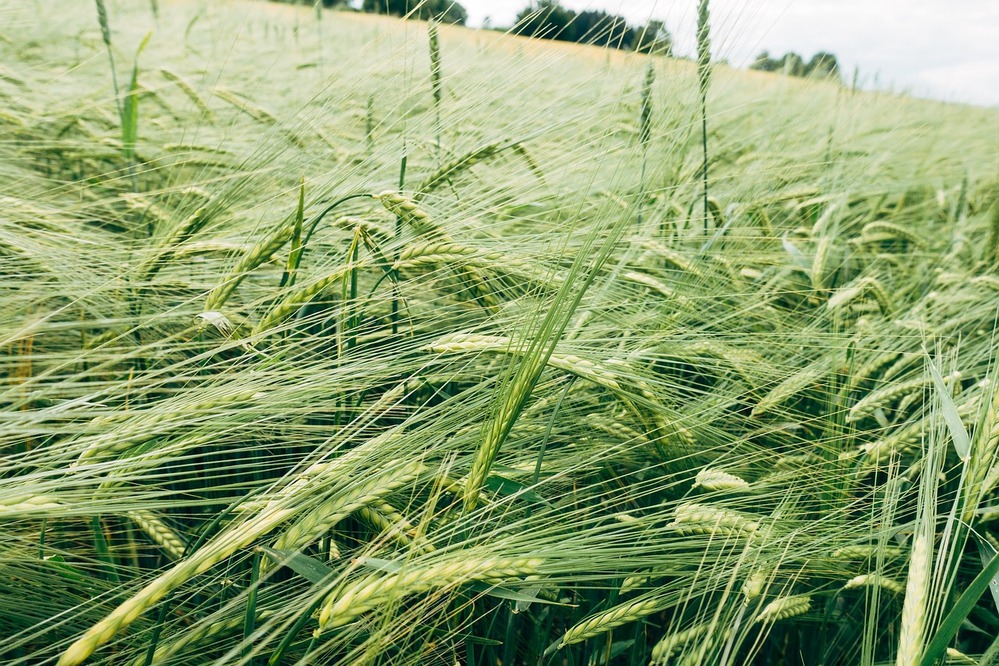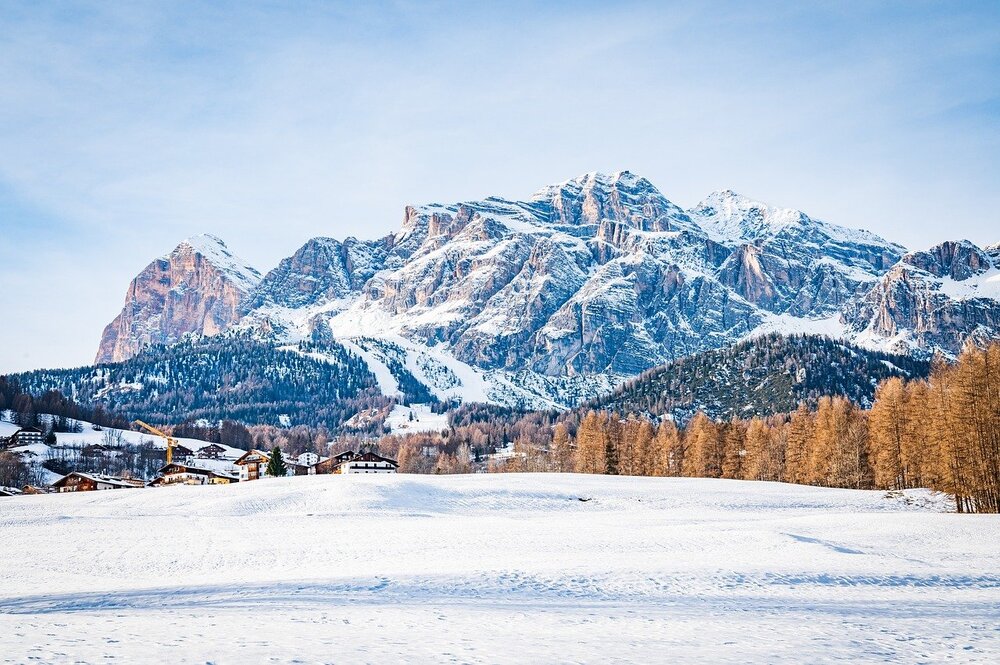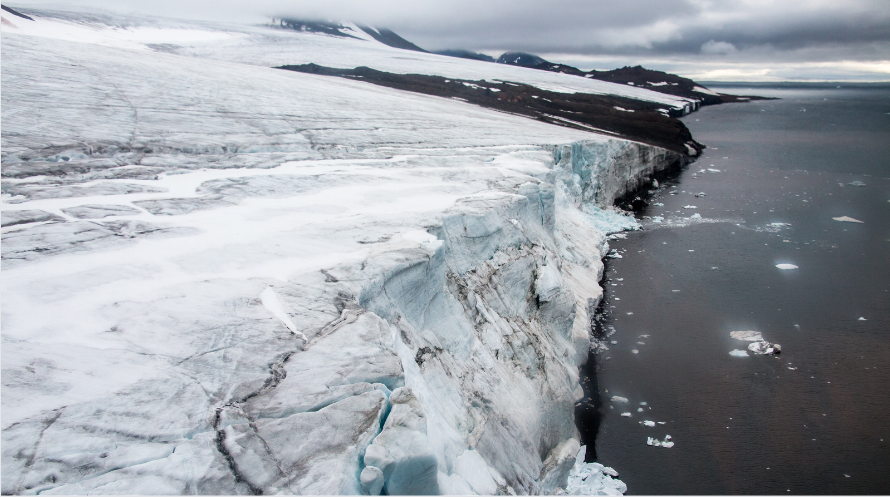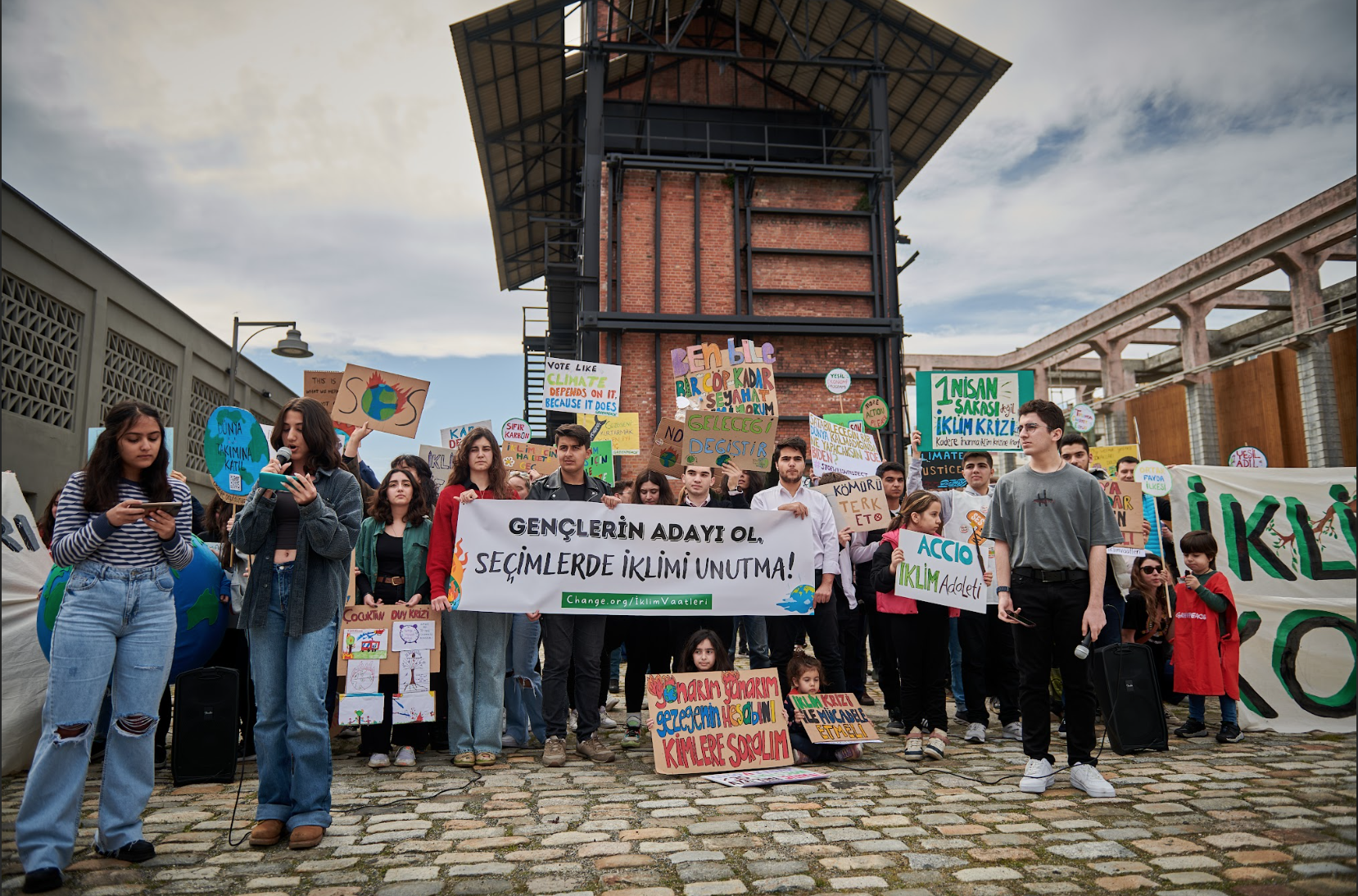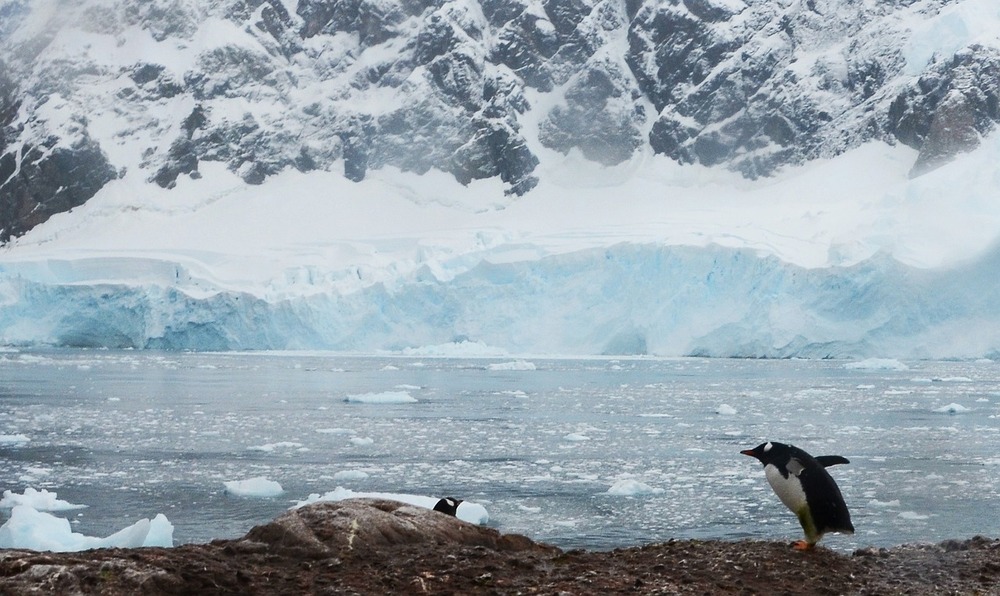İklim distopyası mı ütopyası mı? İklim değişikliğinin geleceği II
İklim değişikliğinde “devrilme noktaları”nın etkileri
Önümüzdeki on yıl iklim değişikliğinin ve insanlığın kaderi belirlenecek. Science Daily’ye göre bir değişiklik yapılmazsa (2032’ye kadar ve sonrasında karbon yayılımı artmaya devam ederse) net-sıfır karbon yayılımına ulaşmamız daha da zorlaşacak.
Başarılı bir şekilde karbon yayılımını düşürdüğümüz bir gelecek için bambaşka bir dönemi tasavvur etmeli ve kültürel değişimi gerçekleştirmeliyiz. Bu da, iklim kriziyle doğrudan uğraşmak demektir ki, şu anda içinde bulunduğumuz noktadan yola çıkarak, ne yazık ki birçok şeyin değişmesi gerektiğini kabul etmekle başlar.
Konuyla ilgili geçmişe ve günümüze bakmalıyız. İklim değişikliği eskiden çok uzun bir zaman içinde gerçekleşecek küçük bir rahtsızlık olarak algılanıyordu. Bu çerçevede Arktik’te 2040’a kadar buz olmaması önemsizdi – bilim insanlarına göre donmuş toprakların erime tehlikesi yoktu ve Arktik tabaka dağılamazdı. Bilim insanları sıcak ve soğuk dönemlerin sıkça egemen olabileceklerinden habersizdiler. 1960’lara kadar bu tür süreçlerin binlerce yıl içinde gerçekleştiğine inanılıyordu.
Haziran 2020’de Kuzey Kutup Dairesi’nin üzerinde yer alan Sibirya’daki bir kasabada 37.8 derecelik rekor sıcaklık yaşandı. Sıcaklıkların yükselmesi ve donmuş toprakların erimesi metan ve karbondioksit salınımını beraberinde getiriyor. 2019’da Nature’ın bildirdiğine göre Kuzey Yarım Küre’nin dörtte birinde 1.6 trilyon metreküp karbon vardı. Aynı rapora göre, donmuş toprakların hızla erimesinin etkisi sanılanın ve o gün için mevcut modellerde belirtilenin iki katı olabilirdi çünkü daha çok metan salgılanıyordu ve metan karbondioksitten 25 kat daha güçlüydü.
2005’e kadar Kuzey Yarım Küre’deki donmuş toprakların bozulmamış olduğuna inanılıyordu. O günden beri 2100’e kadar donmuş toprakların yaklaşık %90’ını kaybedebileceğimiz ortaya çıktı. Eğer, Grönland’daki buz tabakası tamamen erirse 2040’da küresel deniz seviyeleri 6 metreden fazla yükselebilir, ki zaten 20. yüzyılda 20 cm yükselmişti.
Arktik’teki buz kaybı ve donmuş toprakların erimesiyle Batı Antarktika boyunca Grönland’ın parçalanması birçok devrilme noktasından sadece üçü. Bundan 20 yıl önce 5 derecelik ısı artışının geriye dönülmez değişikliklere neden olacağı sanılırken, bugün böyle şeylerin olması için sadece 1-2 derecelik artışın yeterli olduğu anlaşılıyor.
Arktik’teki değişikliklerin açıkça bağlantılı olduğu bir devrilme noktası Arktik tundranın hemen altında gerçekleşen kuzey ormanı kayması. Dünyadaki ormanların neredeyse üçte birine ev sahipliği yapan bu bölge hava sıcaklıklarının artıp donmuş toprakların erimesine yol açmasıyla dünyanın geri kalan ormanlarından iki kat hızla daha az yeşil oluyor.
Carbon Brief’e göre toplamda 9 devrilme noktası var ve bunların hepsi ciddi kayıplara yol açacak. Hava sıcaklıkları 2 derece yükselirse mercan resiflerinin %99’unu etkileyecek. Son 40 yıldır toplu mercan resifi ağartılması 5 kat fazla gerçekleşti. Ağartmalar kısmen termal strese bağlı olup aşırı avlanma, besin eksikliği, fırtınaların yol açtığı zararlar, okyanus suyunun asitlenmesi de bu süreçte rol oynuyor.
Bir başka devrilme noktası da Amazon yağmur ormanlarının ölümü sonrası binlerce tür canlıya ev sahipliği yapan bereketli toprakların Sahara Çölü benzeri bir hale gelmesi.
Bir diğer devrilme noktası da Güney Asya muson yağmurlarındaki kayma. Hindistan gibi nüfusunun yaklaşık yarısının tarımla uğraştığı ve tarımın ekonomideki payının altıda bir olduğu bir ülke için yağmur son derece gerekli. European Geosciences Union’ın Nisan 2021’de yayınladığı rapora göre muson yağmurları Hindistan’daki tüm yağmurun %80’ini oluşturuyor ve giderek daha güçlenip düzensiz hale gelen bu mevsimsel değişiklik tehlike arz ediyor. Batı Afrika’daki musonların 1960 sonlarıyla 1980 sonları arasında %30 azalması yağış kaynağının yok olup anormal kuraklıkların yaşanmasına neden oldu.
Bütün bu devrilme noktaları birbirleriyle bağlantılı. İçlerinden birinin bile devrilmesi geriye döndürülmesi çok zor durumlara yol açacak. Bu da bize iklim değişikliği konusunda hemen şimdi harekete geçmemiz gerektiğini gösteriyor.
İki bölümlük yazının ikincisi
Climate Dystopia or Utopia? The Future of Climate Change
Uncovering the Impacts of the “Tipping Points” of Climate Change
The next decade will determine the fate of climate change—and humankind. By 2032, our carbon budget, which determines how much carbon dioxide we can emit before passing the 1.5-degree threshold for stalling climate change, will have been spent if current trends persist, according to Science Daily. With every additional year that passes—from now until 2032 (and beyond, if emissions keep rising)—climate neutrality (achieving net-zero carbon emissions) slips farther from reach.
To entertain a future where we have successfully lowered emissions is to envision an entirely new era and the marker of a cultural shift. It means tackling the climate crisis head-on, which starts with acknowledging the current state of affairs and mapping out what needs to transform—unfortunately, a lot.
Where we first need to look is our past—and present. Climate change was, at one point, seen as a minor inconvenience, an issue that would take form slowly—or, as was framed in the first Intergovernmental Panel on Climate Change (IPCC) report, “a stately pace.” Along these lines, the fact that by 2040, the Arctic may no longer have ice was trifling—scientists believed that permafrost was not in danger of thawing, and the Arctic sheet was not due to dissipating. In a more general sense, it was unbeknown to scientists that hot and cold periods could sway so frequently. These professionals believed the process took place over thousands of years—until the 1960s. During that time, they uncovered such a phenomenon post the last ice age, which they named the Younger Dryas era. Today, this knowledge is universal—and the evidence of it is right in front of us.
In June 2020, a Siberian town experienced record-high temperatures of 100 degrees Fahrenheit above the Arctic Circle. With the increase in temperature and thawing of permafrost comes the release of methane and carbon dioxide. Twice the amount already in the atmosphere, 1.6 trillion metric tons of carbon, is stored in a quarter of the Northern Hemisphere, per a 2019 Nature report. The same report demonstrates that the effects the rapid thawing of permafrost has “could be twice that expected from current models,” as this process releases more methane—and methane is 25 times more potent than carbon dioxide.
Referring to the past again, it was once believed that the permafrost layering the portion of the Northern Hemisphere was believed to be essentially intact. That was until 2005, after discovering that this permanently frozen layer was not so permanent—by 2100, up to 90% of permafrost could disappear, an estimate by the National Center for Atmospheric Research. In the 2040 scenario, global sea levels could rise 20 feet if the Greenland ice sheet melts entirely, unprecedented to the (already threatening) 7-8 inches it rose since the 20th century; in the 2100 scenario, this case would almost certainly be more extreme.
The loss of ice and permafrost in the Arctic and the disintegration of the Greenland (alongside the West Antarctic) ice sheet are just three of several tipping points—a term first introduced by the IPCC two decades ago. At the time, scientists thought irreversible environmental phenomena would occur if temperatures rose by five degrees Celsius—and not two or even one as is realized today.
A tipping point most clearly connected to the changes in the Arctic is the boreal forest shift that is occurring directly below the Arctic tundra. Home to nearly one-third of the world’s forests, this region is progressively becoming less green as temperatures rise (at a rate twice that of the rest of the world) due to the aforementioned permafrost loss. Tangentially, the melting Greenland ice sheet is also affecting the Atlantic Meridional Overturning Circulation; its state will determine that of the northern hemisphere.
The remaining tipping points (nine in total per Carbon Brief) also include the severe loss—likely 99%—of coral reefs if temperatures rise two degrees. Over the past 40 years, mass coral bleaching events have become five times more common. This bleaching happens partially due to thermal stress; factors like overfishing, lack of nutrients, storm damage, ocean acidification, also contribute to this occurrence. As corals lose the algae that characterize their neon-like colors and allow them to photosynthesize, it will become increasingly difficult to reverse the damage done.
The seventh tipping point is that of an Amazon rainforest dieback, which could turn the once lush land home to thousands of species into a dry Sahara Desert-like state. According to Dr. Carlos Nobre, deforestation of the Amazon rainforest by 40%—33% to go, considering current deforestation levels—would catalyze 60 to 7% of this previously arboreal area to turn into a dry savannah.
Next up: the Indian, or South Asian, monsoon shift. Being a country wherein about half of the population works in agriculture, a sector that accounts for nearly a sixth of the economy, rain is essential. In a report published by the European Geosciences Union in April 2021, India relies on the monsoon season for roughly 80% of its rain, making the increasingly-strong-and-erratic nature of this seasonal change ever dangerous. The opposite is true in the West African monsoon shift, the leading source of precipitation in the Sahel region. Instead of heavy rainfall, this region has observed abnormal droughts; during the late-1960s to late-1980s, more than 30% of rain decreased.
Inevitably, these tipping points are all interconnected. Once they tip, it will become increasingly difficult to reverse conditions—even if we bring emissions back down to a healthy level. This only reiterates that we must act now to slow climate change; otherwise, we face the potential of creating a “feedback loop” that will affect all facets of our lives. We cannot entertain a 2032 wherein we have failed to decrease emissions. We cannot face the worsening of a climate dystopia.
Second of a two-part series
Kaynaklar / Sources:




